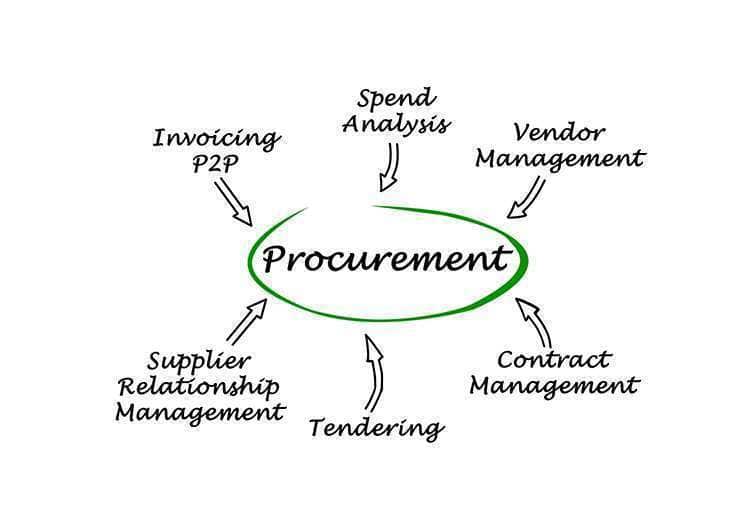-
Evaluating Your Procure-to-Pay Process to Prepare for Business Process Automation Software
What does your company’s procure-to-pay process look like?
That might be a harder question to answer than you think. If you haven’t evaluated or mapped out your company’s procure-to-pay (P2P) process recently, then you likely don’t have a complete view of all the steps in the process. In one 2017 survey, 69% of companies said they didn’t have full visibility into their supply chain, which is a key aspect of the P2P process. It’s common for companies not to have full visibility into the procurement process.
If you’d like to improve visibility and make the P2P process more efficient, business process automation (BPA) software is one of the best tools available. For BPA software to function at its best, though, you need to evaluate your current process and map out what your preferred P2P process should look like.

Laying Groundwork for BPA
Automation doesn’t give you an entirely new P2P process. Rather, the software is a tool that a company’s procurement, receiving, and accounts payable staff use to support the company’s own individual process. You can customize the software extensively, matching it to existing workflows or using it to create new and improved P2P processes.
To automate successfully, it helps to know what the process looks like now. Then, your company can decide what to keep and what to change during software implementation.
Mapping and Evaluating P2P Workflow
Traditionally, the procurement department handles sourcing and purchasing, while receiving and paying invoices falls under the purview of other departments (e.g., accounts payable). In the modern business world, though, it’s helpful to look at the whole procure-to-pay process even though different departments handle different steps.
Mapping out your company’s P2P workflow can help you gain visibility into the whole process. It’s also helpful as a guide when you automate, particularly if you’re using an end-to-end software suite to seamlessly automate the entire procure-to-pay process.
Sourcing
When mapping this step, you’ll be looking at your company’s process for selecting suppliers. You’ll also want to analyze your supplier management system and supply chain. Some items to include on your map include:
- The person(s) responsible for selecting suppliers.
- Criteria used for supplier selection.
- Strategy for managing suppliers (e.g., spreadsheets, database, etc.).
- Contracts in place; expectations for suppliers.
Purchasing
After evaluating the company’s sourcing strategy, it’s time to look at purchasing. This is a stage where things often start to break down. For example, your procurement department might not have all company spend under their management because of maverick spending from employees going around the approved purchasing system. As you map this part of the process, here are some things to include:
- Incidents of non-compliant spending.
- Percentage of spend under management.
- Efficiency and user-friendliness of the current purchasing system.
- Method for generating purchase orders and sending them to suppliers.
- Person(s) in charge of budgeting and approvals.
- Policies related to purchasing.
Receiving
For most companies making purchases, it makes sense to have a process for tracking goods received. You want to make sure that the products you ordered all arrive and that they’re in usable condition. Receiving is particularly important for companies maintaining inventory, since it’s the first step in logging new inventory. For mapping this part of the P2P process, take note of who performs tasks related to receiving and how receiving happens in your company. These include:
- Where receiving happens and who is responsible.
- Policies for determining when there is a problem and how to report issues.
- Standardization of goods received (GR) documents.
- Inventory management process.
Invoicing
Once purchased goods are received, it’s time for accounts payable (AP) to do their part of the P2P process. When mapping this part of the system, take note of and evaluate your company’s workflow for the following tasks:
- Receiving invoices (digital, on paper, fax, etc) and entering them into the AP system.
- Matching invoices, goods received, and purchase orders.
- Method for identifying and reconciling errors in invoices.
- Processing cycle time for invoices.
- Approval system for releasing payments.
- Types of approved payment methods.

Choosing Automation Software for P2P
Mapping your current P2P process gives you increased visibility into the whole purchasing system. It also provides an opportunity to elicit feedback, identify weaknesses, and plan improvements to the process.
With knowledge of how the current P2P system works and how you want to improve the process, you’re in a great place to implement BPA software. Knowing what you need the software to do makes it much easier to select the software system that will fit your company’s unique needs.
When you’re comparing software solutions, look for ones that offer demos so you can see first-hand how the software will work for your company. Use your evaluation of the procure-to-pay process to prepare questions for each potential software company in advance. You might even consider having them follow a sort of demo script so you can see how the different systems would handle the different tasks you need them to perform.
End-to-End Software Solution
One of the things to look for is a software suite that can automate all aspects of the procure-to-pay process. You don’t want to mix-and-match software if you can avoid it. Automating purchasing, receiving, accounts payable, and payments through the same software supplier avoids any software incompatibility. It also makes collaboration easier since the software will communicate seamlessly.
With NextProcess, you can even go a step further and automate budgeting and capital project management at the same time as the P2P process. We offer the only software suite with modules to efficiently power your capital project management, procurement & purchase orders, accounts payable, travel & expense, and payment disbursements. Contact us today to schedule a free demo and see how NextProcess can enhance your company’s unique procure-to-pay process.